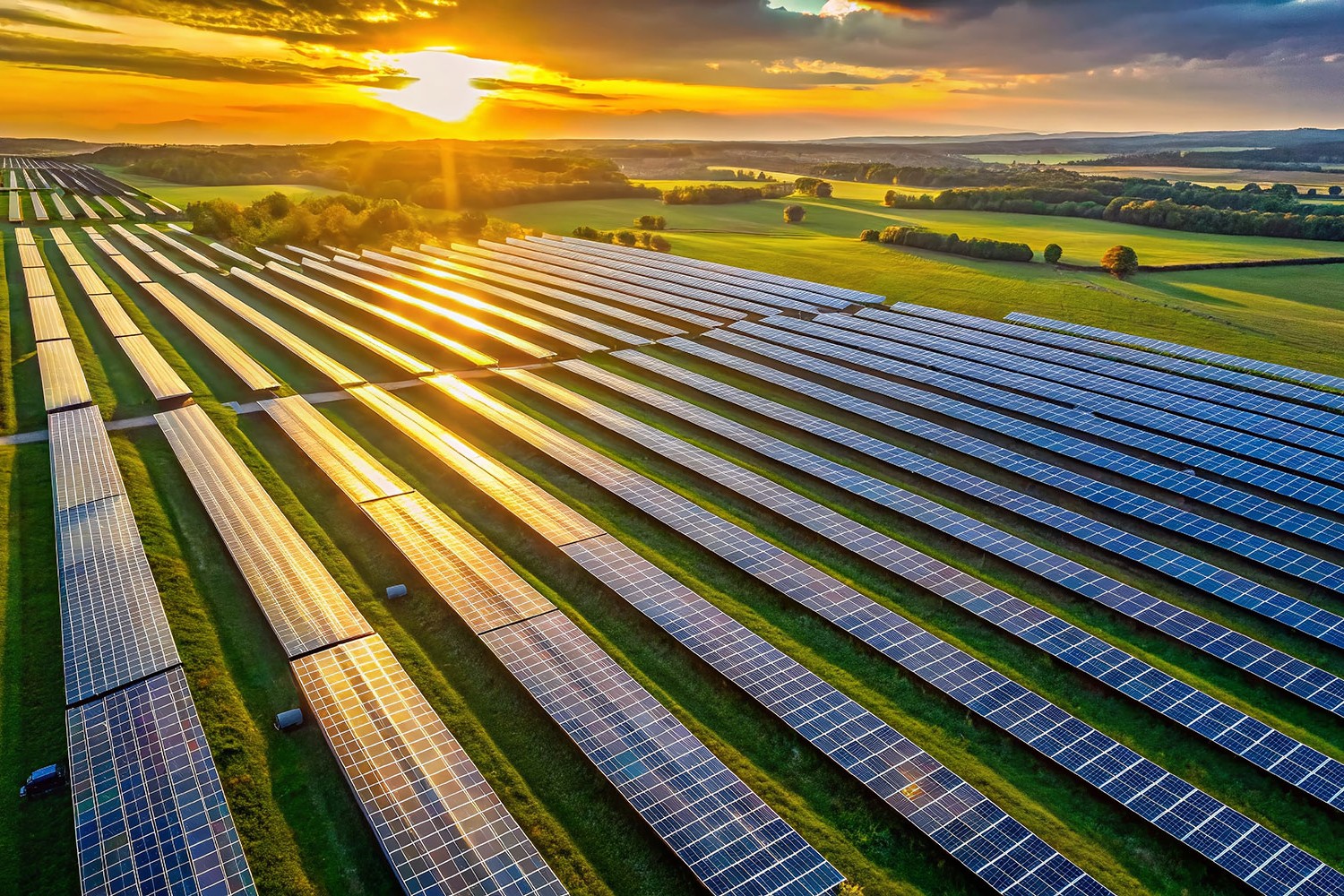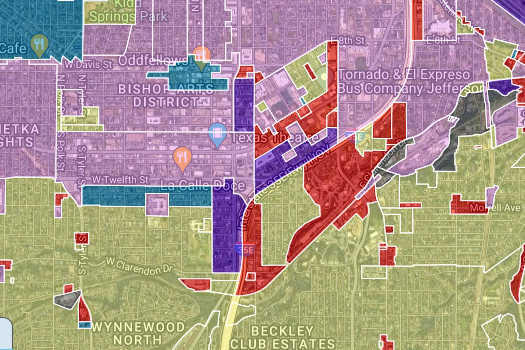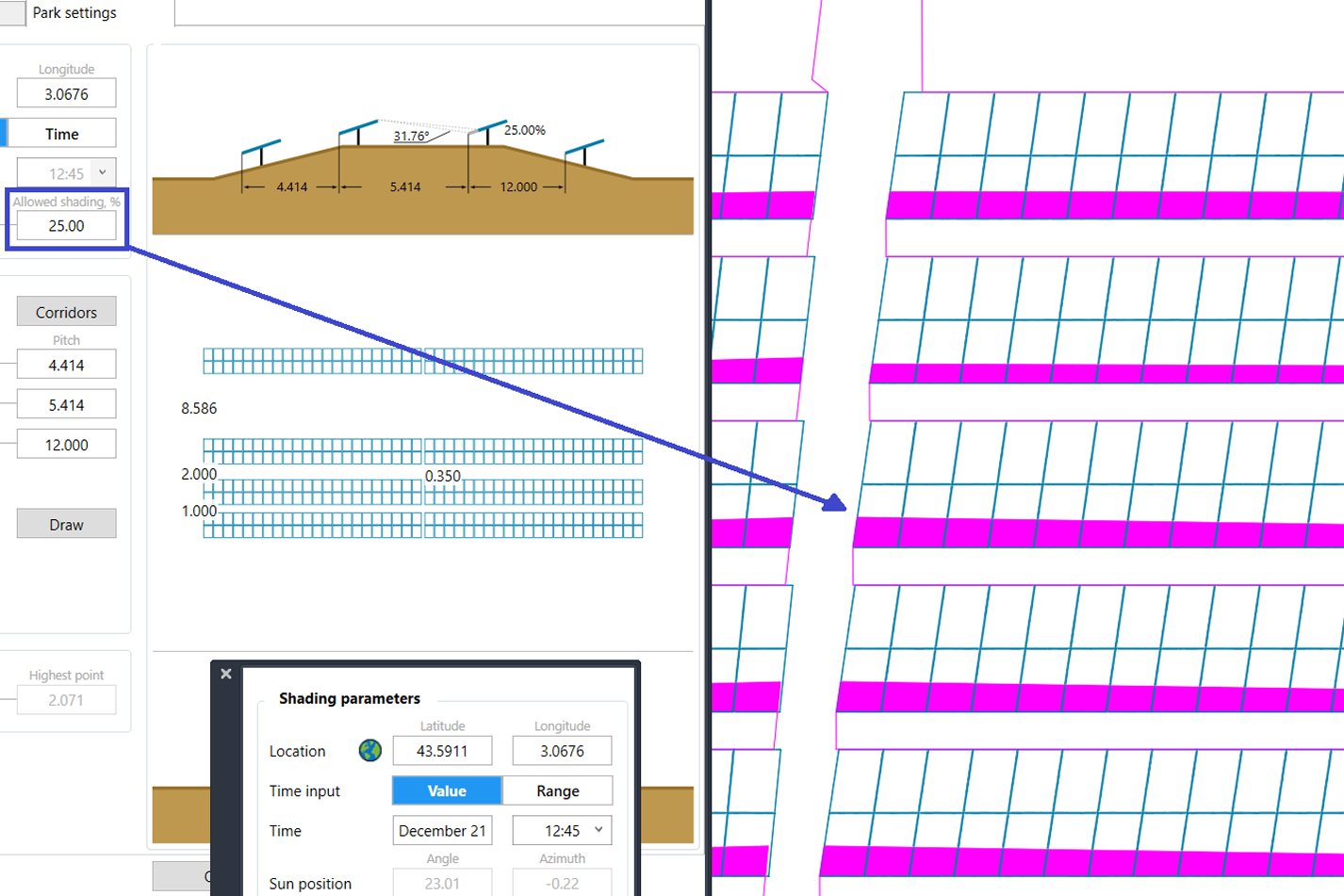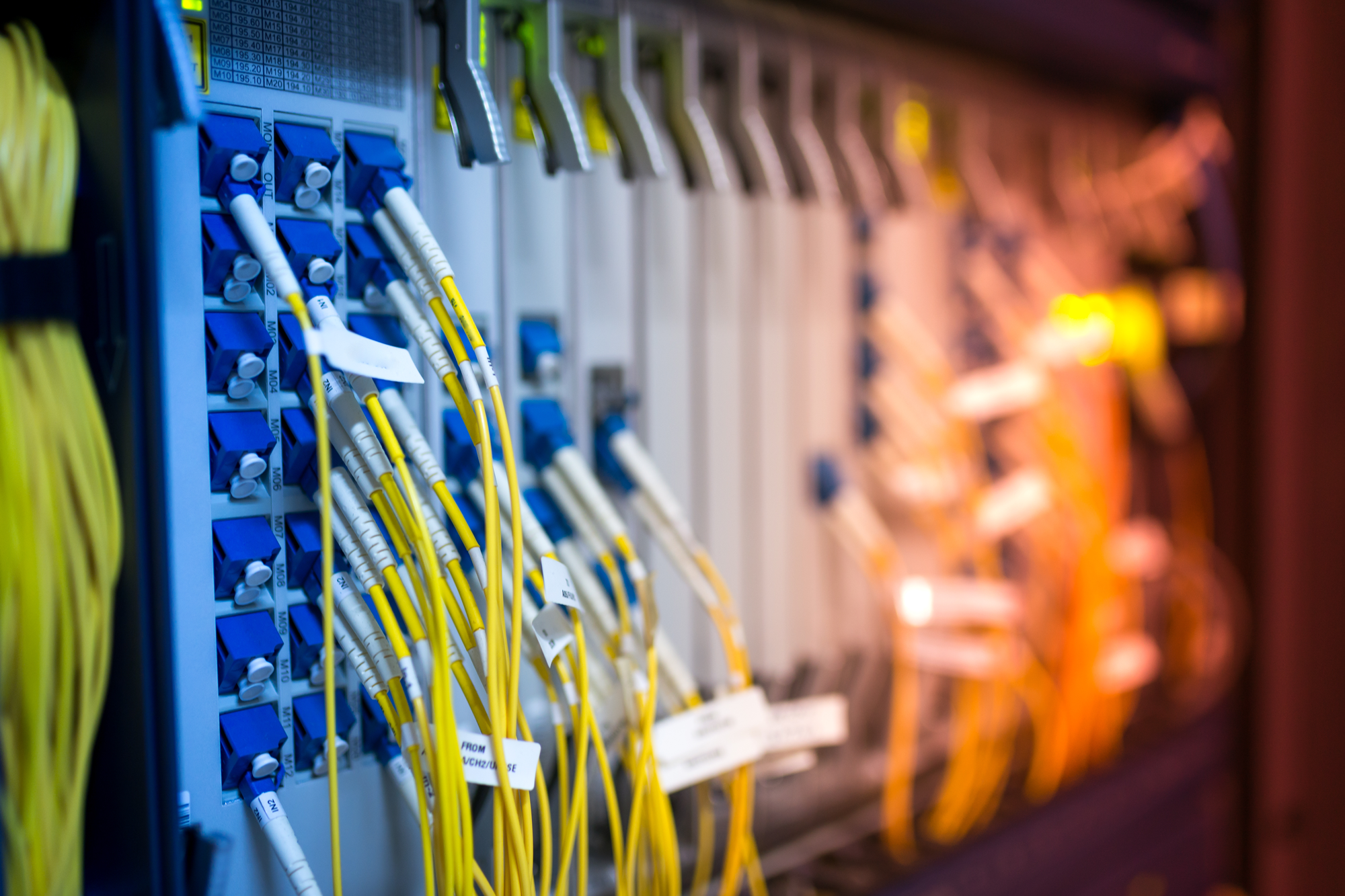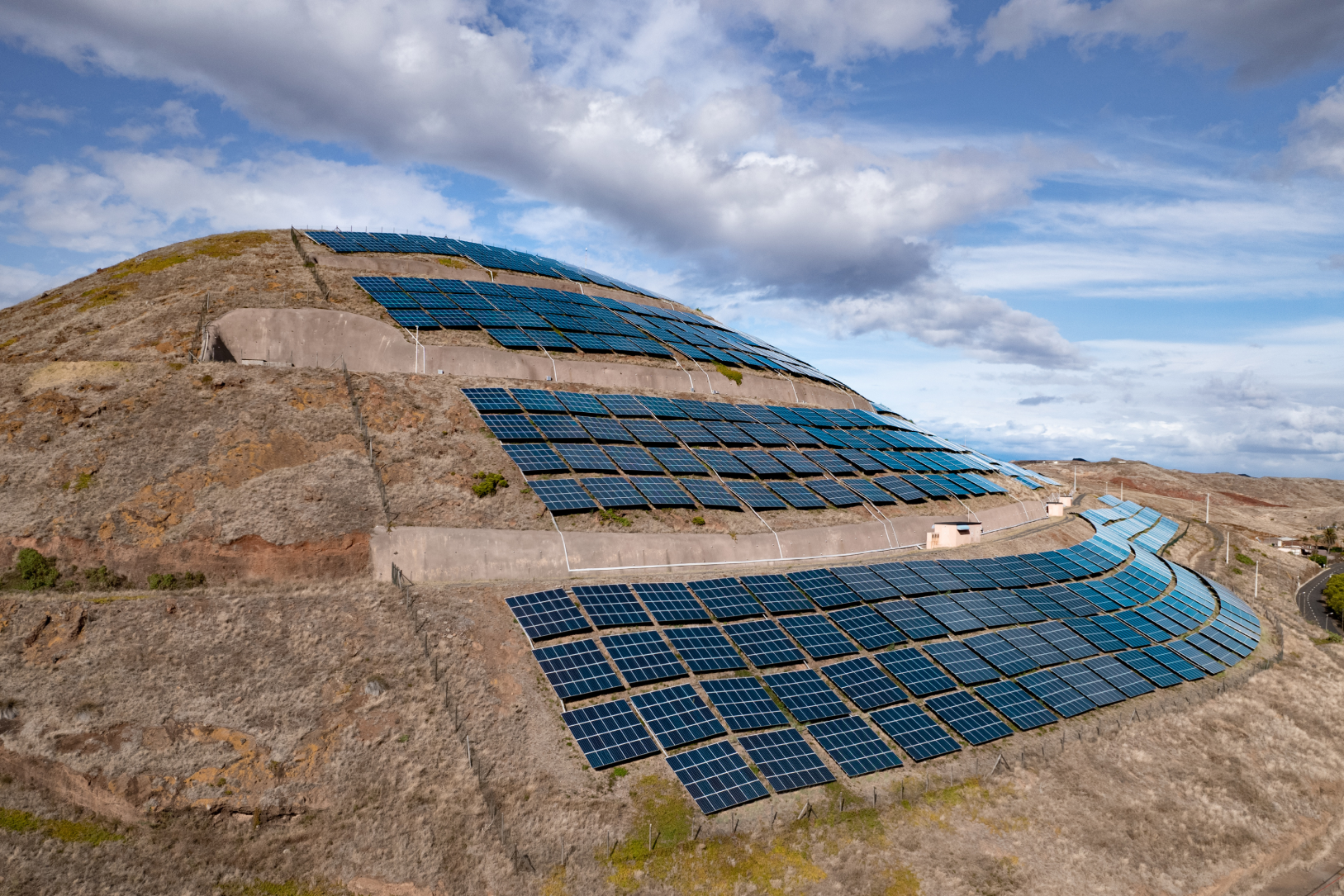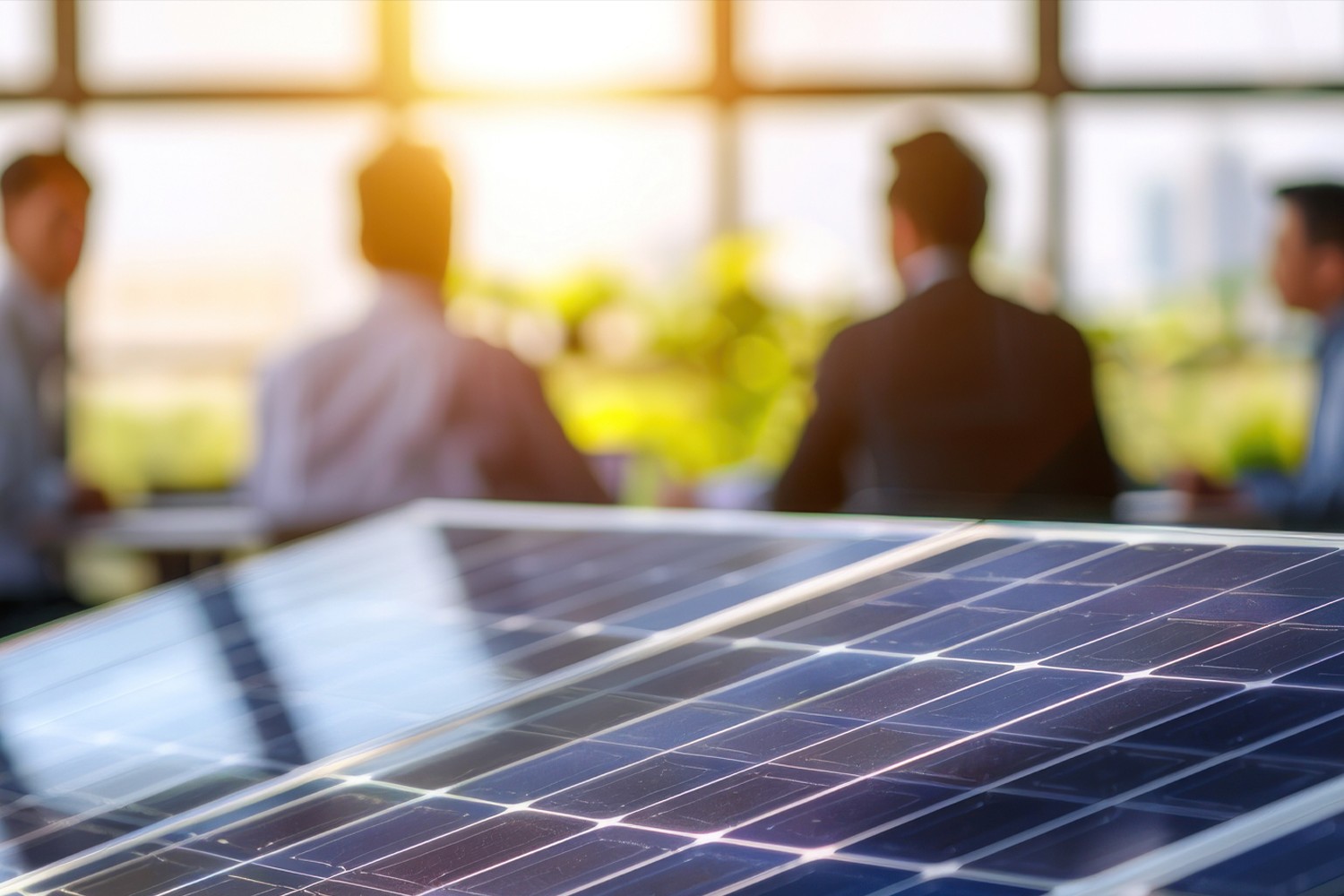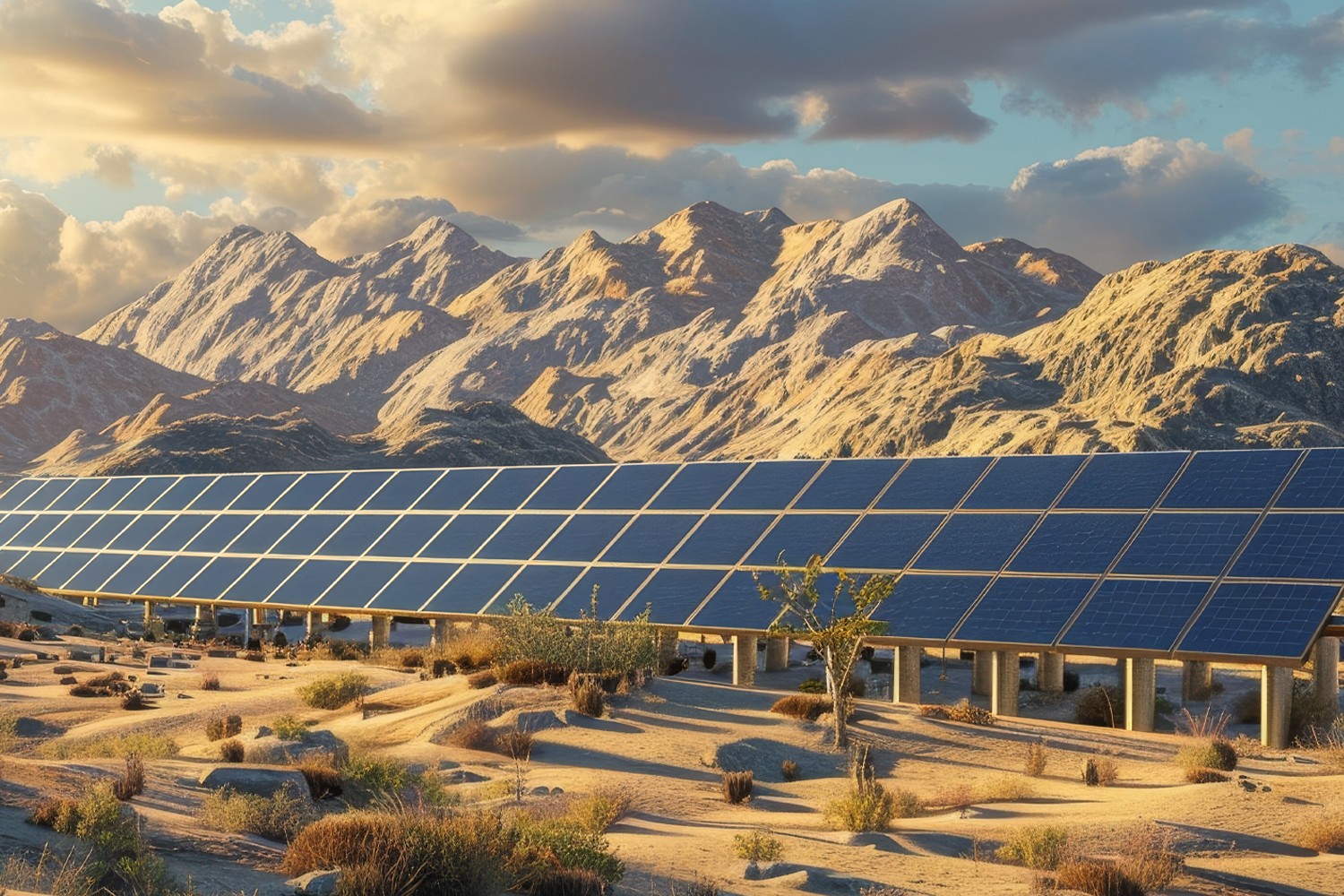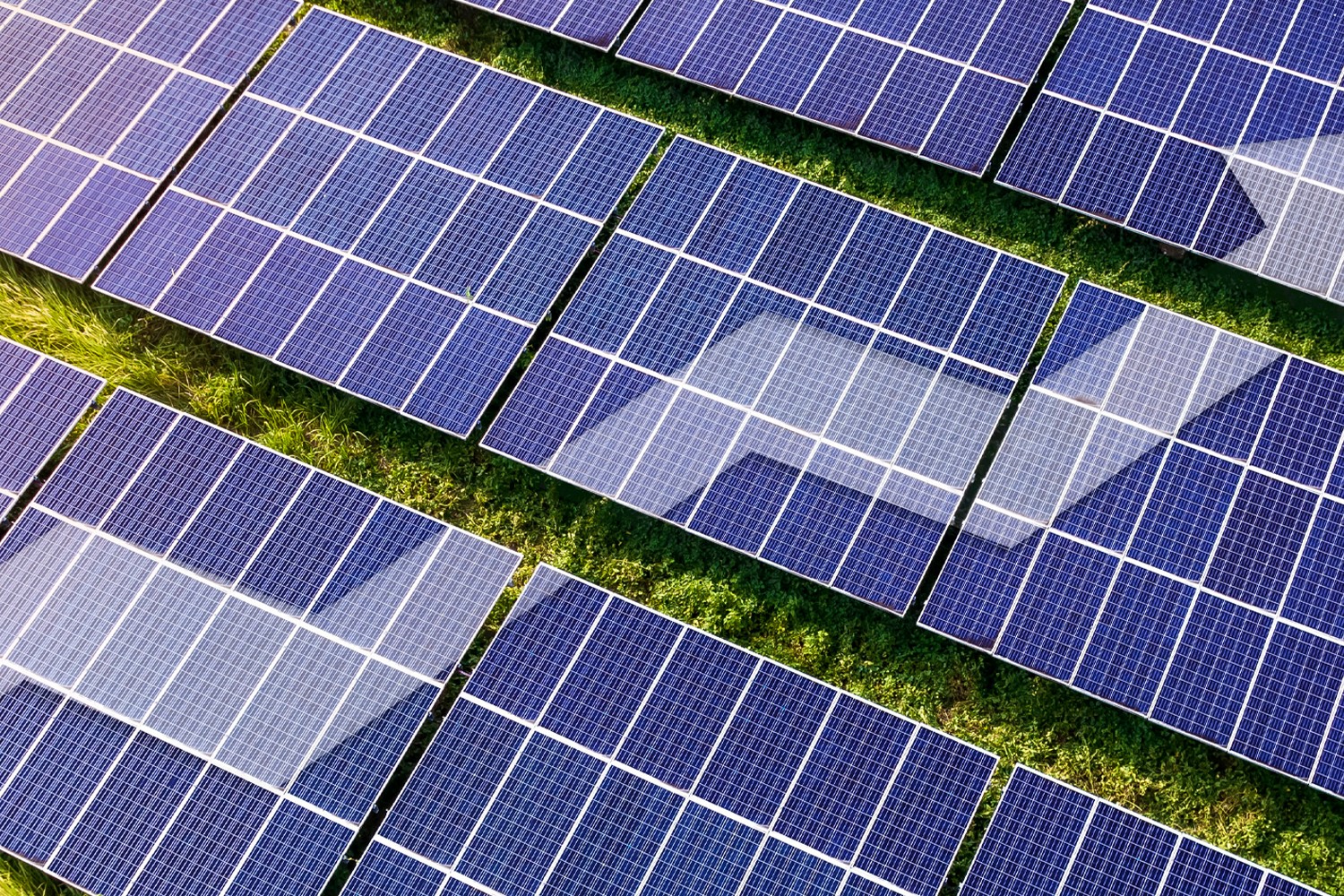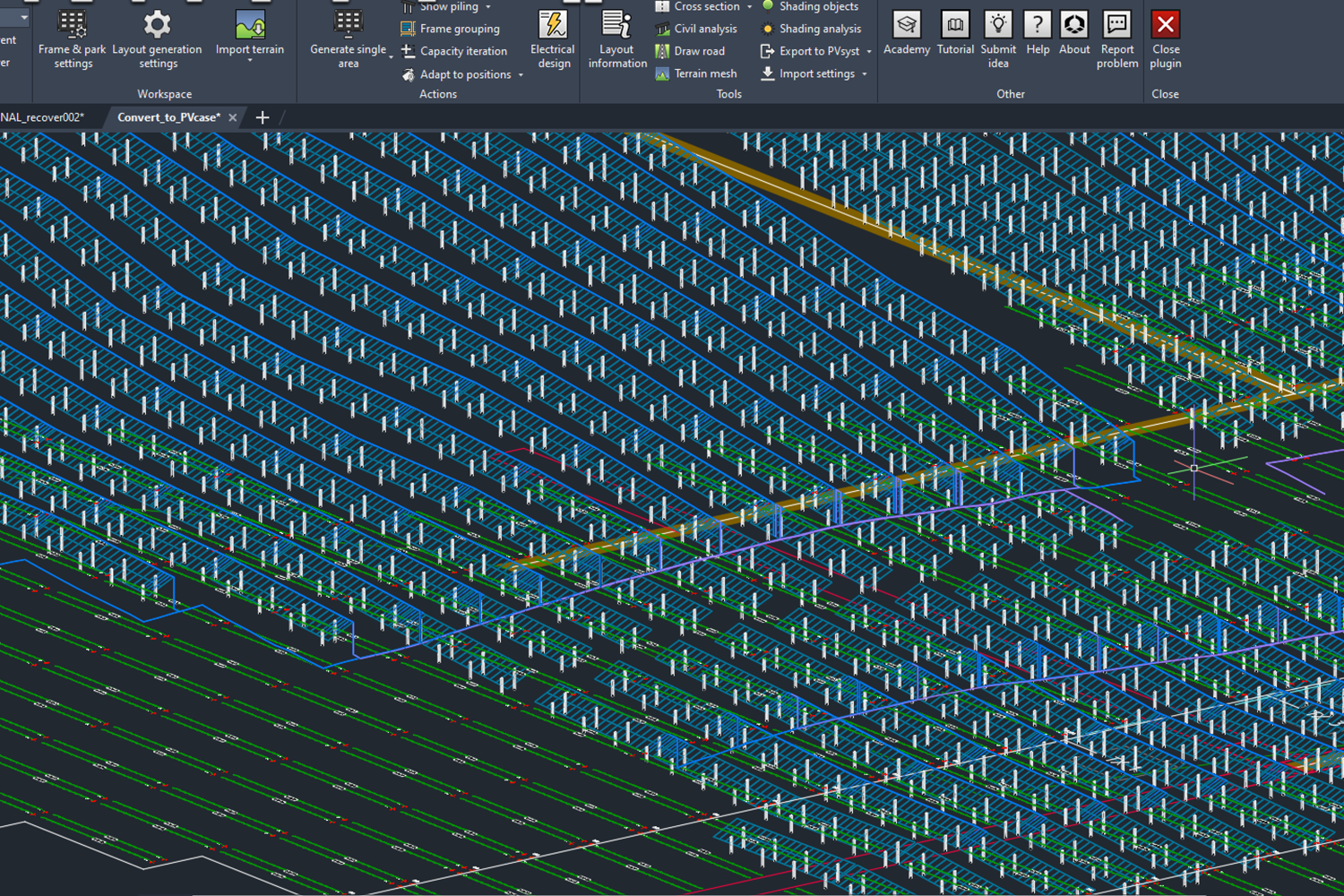What is agrivoltaics
Agrivoltaics refers to using the same land to generate solar electricity and support agriculture. As the world moves past the TW scale solar fleet and we deploy more solar every year, it is becoming increasingly difficult to find suitable land to develop solar projects. This situation is increasing concerns over the potential competition between using land to decarbonize the energy sector and sustainable agriculture, as lands most suited for a solar park often could be used to grow food. To address these concerns, the agriculture and solar sector collaborate to develop agrivoltaic projects that generate electricity while maintaining agricultural production.
Outline why agrivoltaic systems are becoming more popular
In addition to addressing land-use conflict concerns, agrivoltaics is a growing trend within the solar and agricultural sectors for several reasons. The agriculture sector is heavily impacted by climate change, due to increasing global average temperatures, unpredictable precipitation, and more frequent extreme weather events such as droughts and hailstorms. In this way, agrivoltaics not only mitigates climate change but also helps agriculture adapt by providing protection and shade to crops and animals.
Furthermore, agrivoltaics can enable sustainable development and increase investment in rural areas. Farmers can enjoy higher and more reliable agricultural yields, thanks to the better growing conditions that solar panels can provide. Rural communities can also benefit from locally sourced renewable electricity and obtain new revenue streams, in the form of land leases or the sale of electricity generation. Finally, solar can underpin the promotion of more sustainable agricultural practices, notably by replacing the use of single-use plastics and by providing more durable pest control measures that avoid the need for pesticides. Leasing out the farmland to a PV project could help the land recharge and recover.
The dual-use of land can provide additional income and work opportunities, as well as provide local communities with clean energy without sacrificing their livelihoods.
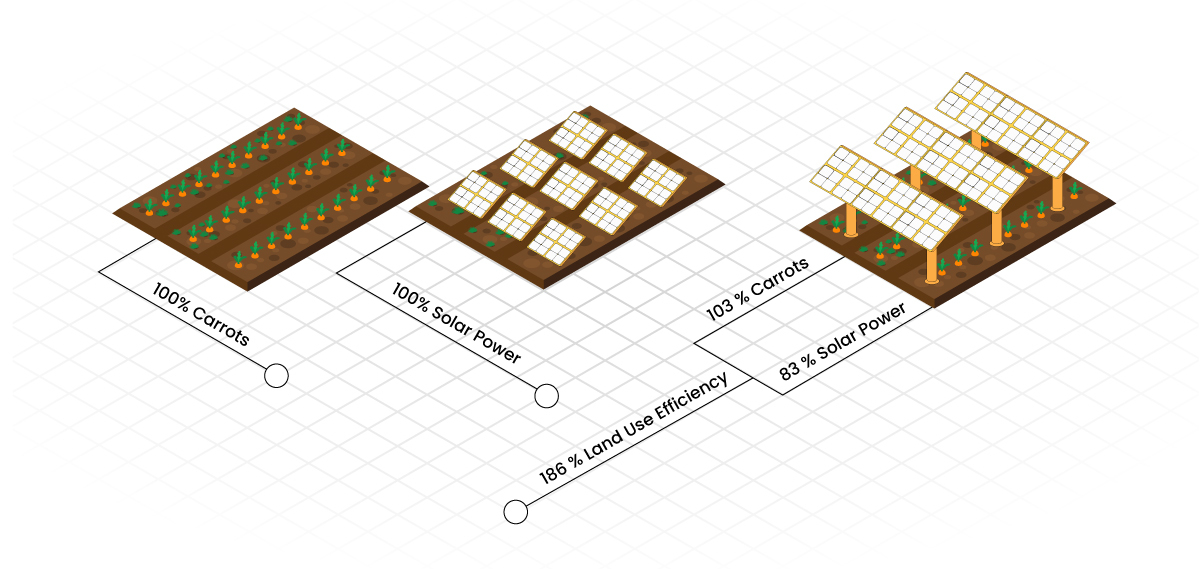
Advantages of solar PV for the agriculture sector
- Linking two sectors
Simply put, there’s only so much land that’s available. And with the increasing demand for clean energy, it’s important to consider the need for energy without neglecting the need for food. As an example, if we take two plots of land and dedicate them both to agrivoltaics, it could potentially yield twice the results than if the land use was divided. Additionally, this could become a diversified revenue stream for the parties involved, as the same land caters to two separate industries.
- Increased solar yield
Vegetation under the panels can be beneficial to energy production. The warmer the panels are, the less efficient they become. Plants can lower soil temperature by evaporating water, which in turn cools down the panels. Thus, the slight temperature regulation yields more energy production. Furthermore, plants can create complex variations in albedo which can affect bifacial modules. - Increased agricultural yield
Plants also benefit from the union between PV parks and agriculture. The panels provide shade for the vegetation, shielding them from direct sunlight and keeping them from losing too much water, which adds to the sustainability goals. According to SolarPower Europe, shading is especially useful in dry and water-limited areas, and can protect the vegetation against severe droughts. The use of panels could potentially extend the growing season as well.
Examples of agrivoltaic systems currently in use
- BayWa r.e. developed their first large scale 2.67 MW Agri-PV project in the Netherlands focusing on 3.3 hectares of raspberries. It’s one of the largest projects of its kind in Europe; with about 80% of electricity generation efficiency of a standard ground mount solar system and leading to increased crop yields when compared to standard raspberry plant protection systems. The project demonstrates how dual-use of land can contribute to climate protection and decarbonisation. BayWa r.e. stated their commitment to help farmers adapt to climate change, and hope their Agri-PV project will help promote the mix between solar energy and agriculture.
- Endesa launched 5 pilot projects, one of which is the Carmona solar plant project, which combines growing aromatic plants and keeping 50+ bee hives under solar panels. According to results, beekeeping improves crop productivity through increased pollination.
- Agrivoltaics installation at the Domaine de Nidolères in France hopes to revitalize the vineyard by covering 4.5 Ha with solar panels. Project was launched in 2018 and so far managed to achieve a 20% reduction in the plot’s water consumption, mitigate the damage of heatwaves, and improve acidity of the crops.
Adoption challenges
While agrivoltaics seem like a perfect solution, there are plenty of things to consider. Currently, agrivoltaics support only the shade-loving plants, which means that crops that require sunlight will not benefit from this practice. Also, the height of the vegetation needs to be accounted for. Larger plants will need panels to be raised higher as well, which impacts the structural integrity. In turn, panels will need to be built to account for wind and similar damage, and that adds extra costs. Currently, there’s a limited availability of technology suited for agrivoltaic projects. Countries also have different regulations regarding agrivoltaics, which can affect project permits and even potential financing and investments.
And in cases where the land is used for animal farming, it’s important to keep in mind the impact the animals will have on the panels. Additional care and maintenance will be required, which can become costly.
The future of agrivoltaics
Agrivoltaics hold the promise to simultaneously produce more clean energy while sustaining agriculture. Innovations in the use of tracking systems and transparent PV modules will bring additional opportunities to integrate more agricultural practices with PV systems.
The dual-use of the land could theoretically produce twice as many results – food and energy without sacrificing either – but there are roadblocks as well. Not all crops can be grown under the panels, and the temperature control that the panel provides is less efficient in the climates where there are no harsh climate fluctuations. That said, there’s no denying that dual-use of land would give stability to the increasing demand for solar; it would also provide farmers with an additional stream of revenue, since solar parks guarantee financial gain.
Agri-PV is getting more popular, as the world realizes the potential for generating electrical and agricultural yield from the same piece of land. PVcase Ground Mount has been adjusted to make it compatible with these new requirements.
You might also be interested in:
March 26, 2025
PVcase Yield product guide: revolutionize solar energy modeling with advanced technology
Download PVcase Yield product guide and discover how PVcase Yield is transforming solar energy modeling with its advanced digital twin technology and physics-based simulations.…
March 25, 2025
The impact of Zoning Data on strategic site selection
Zoning Data encompasses the information used by local governments to classify land use. Learn how this new addition to PVcase Prospect enables solar developers to choose a project…
March 24, 2025
PVcase’s spring product updates: what’s new
PVcase and HeatSpring offer a new training bundle on utility-scale solar engineering for solar designers and engineers.
March 5, 2025
Why fiber data is non-negotiable for data center site selection
Discover why integrating fiber data into your data center site selection process is crucial for reducing costs, accelerating deployment, and improving network resilience.
February 20, 2025
PVcase Ground Mount wins G2 2025 Best CAD & PLM Software award
PVcase and HeatSpring offer a new training bundle on utility-scale solar engineering for solar designers and engineers.
February 18, 2025
PVcase partners with HeatSpring for advanced utility-scale solar training
PVcase and HeatSpring offer a new training bundle on utility-scale solar engineering for solar designers and engineers.
February 3, 2025
Solving ground mount solar design challenges. A guide by engineers, for engineers
Download our e-book for expert insights and actionable solutions to the common pain points you encounter in your day-to-day work, and start taking back your development time.
January 15, 2025
Award-worthy solar software: PVcase’s impact in 2024
Explore how PVcase's award-winning product suite is combating climate change through innovative software and what achievements were recognized the most.
January 14, 2025
Top 10 questions asked during the PVcase Digital SmartUp’24 — answered
Customers ask, we answer — read the article to find answers to the top 10 most asked questions at the exclusive PVcase Digital SmartUp'24 event.
January 10, 2025
Developing solar projects on challenging land
Solar developers face fierce competition, congested grids, and a shrinking pool of ideal sites. What's the solution? Read and and learn how to develop on challenging land instead.
December 12, 2024
Why Locational Marginal Pricing (LMP) data is essential for solar development?
Locational Marginal Pricing (LMP) data helps solar developers forecast profitability, minimize financial risk, and optimize site selection. Let’s break down what LMP data is, its…
December 11, 2024
PVcase product updates — November highlights
With PVcase November updates, you can achieve faster, more accurate results today — no need to make them your New Year’s resolutions. Dive into the major updates from the PVcase…
December 9, 2024
The importance of quality GIS data for solar site selection
Discover the impact of high-quality GIS data on solar site selection. Learn how parcel data, grid capacity, and LMP data optimize solar project development, reduce risks, and…
December 2, 2024
Consequences of extreme weather events: can we still afford it?
Floods, hurricanes, wildfires — whether we want them or not, extreme weather events have become the new normal. This year alone, there have been 24 billion-dollar weather…
November 14, 2024
Fail fast, succeed faster: the developer’s guide to streamlining solar projects with early-stage development software
Discover how solar developers thrive by adopting the 'fail fast, succeed faster' approach. Explore the role of early-stage development software, such as PVcase Prospect, in…


